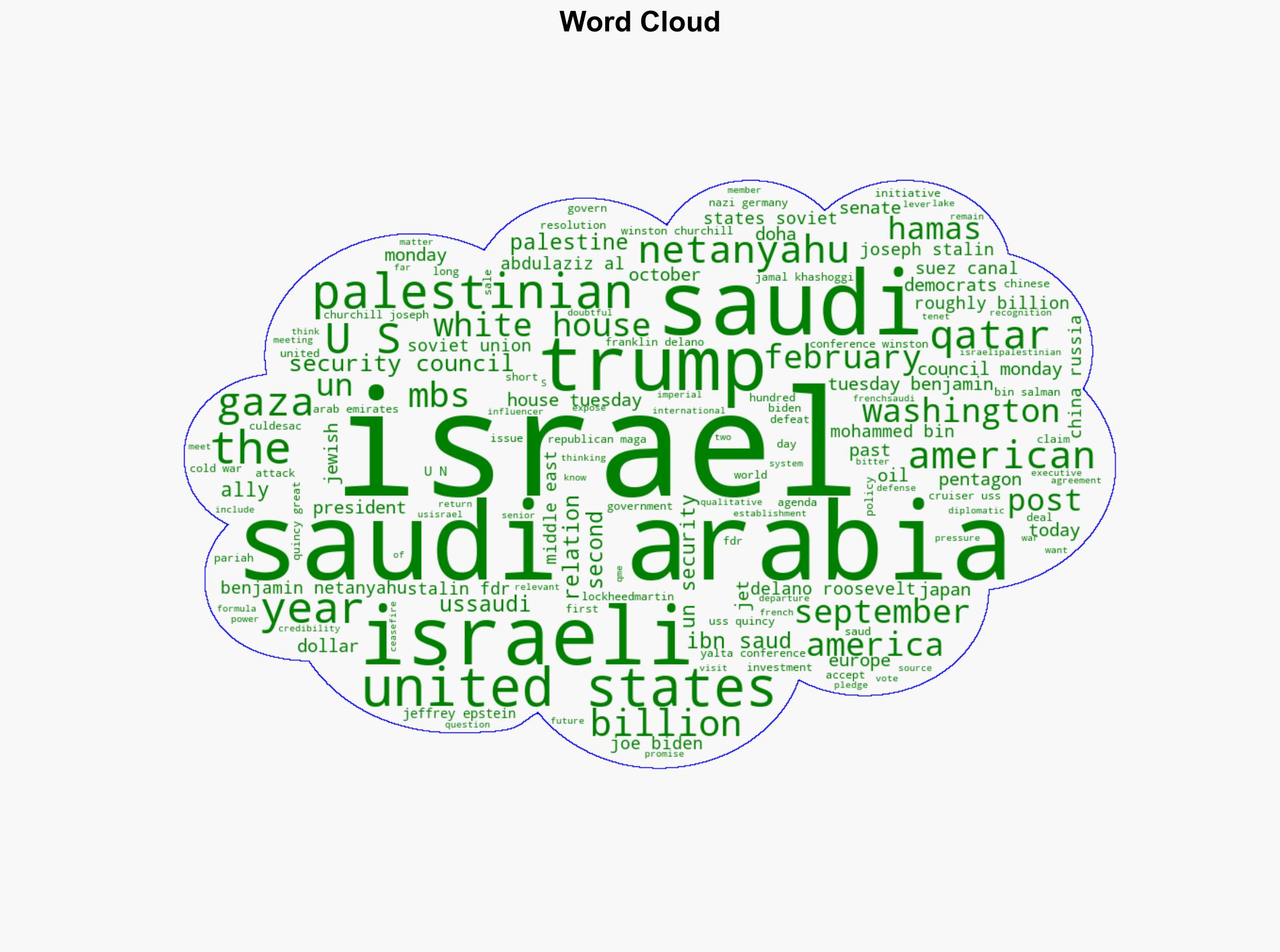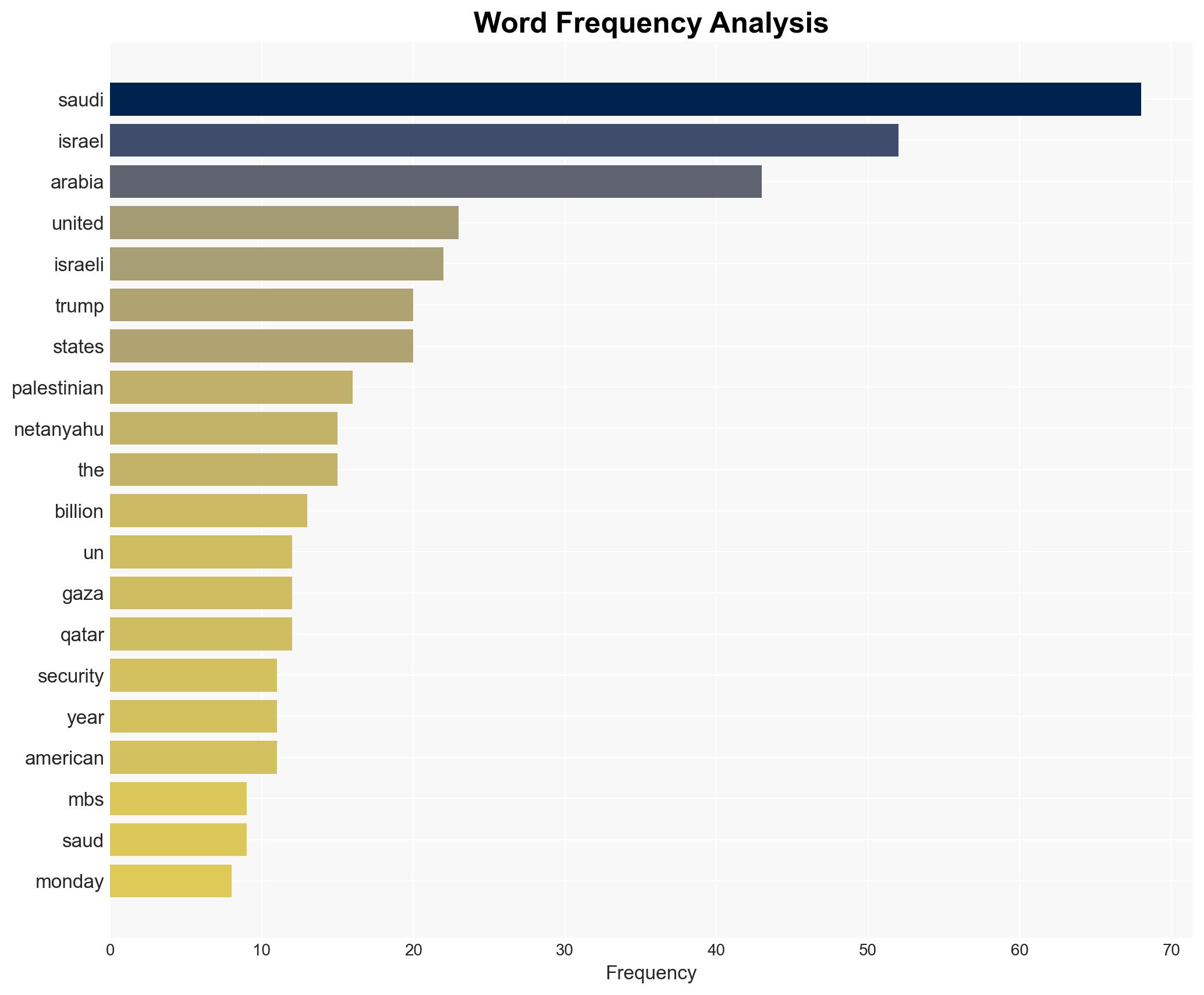This Trump-MBS Bromance Was Brought to You by Benjamin Netanyahu – The New Republic
Published on: 2025-11-18
AI-powered OSINT brief from verified open sources. Automated NLP signal extraction with human verification. See our Methodology and Why WorldWideWatchers.
Intelligence Report:
1. BLUF (Bottom Line Up Front)
With a moderate confidence level, the most supported hypothesis is that the evolving diplomatic dynamics between the United States, Saudi Arabia, and Israel are primarily driven by transactional interests and geopolitical realignments, rather than a coherent long-term strategy. Recommended actions include monitoring shifts in U.S. foreign policy under current and future administrations and preparing for potential regional instability resulting from these alliances.
2. Competing Hypotheses
Hypothesis 1: The Trump administration’s engagement with Saudi Arabia and Israel is a strategic move to counterbalance Iranian influence in the Middle East, with the normalization of relations between Saudi Arabia and Israel serving as a cornerstone of this strategy.
Hypothesis 2: The interactions are primarily transactional, driven by economic interests and personal relationships, with less emphasis on a cohesive regional strategy, potentially leading to short-term gains but long-term instability.
Hypothesis 2 is more likely due to the emphasis on arms sales and investments, as well as the lack of a clear strategic framework addressing broader regional issues such as the Israeli-Palestinian conflict.
3. Key Assumptions and Red Flags
Assumptions: It is assumed that the U.S. administration’s policies are consistent and will be sustained by future administrations, which may not be the case given political shifts. Another assumption is that Saudi Arabia’s normalization with Israel will proceed without significant internal or regional opposition.
Red Flags: The potential for deception exists in the publicized intentions of the involved parties, particularly regarding the true extent of Saudi-Israeli normalization and the U.S.’s long-term commitment to these alliances.
4. Implications and Strategic Risks
The transactional nature of these relationships could lead to regional instability, particularly if the U.S. shifts its stance or if internal pressures in Saudi Arabia or Israel lead to policy reversals. The arms sales to Saudi Arabia could provoke Iranian countermeasures, escalating military tensions. Additionally, neglecting the Israeli-Palestinian conflict could exacerbate regional unrest and undermine any diplomatic progress.
5. Recommendations and Outlook
- Monitor U.S. policy changes and prepare for shifts in diplomatic priorities with new administrations.
- Encourage dialogue on the Israeli-Palestinian conflict to prevent it from becoming a flashpoint.
- Best Scenario: Successful normalization leads to regional stability and economic growth.
- Worst Scenario: Breakdown in relations leads to increased regional conflict and economic downturn.
- Most-likely Scenario: Continued transactional relationships with periodic diplomatic tensions.
6. Key Individuals and Entities
Donald Trump, Mohammed bin Salman (MBS), Benjamin Netanyahu, Joe Biden.
7. Thematic Tags
Regional Focus, Middle East, U.S. Foreign Policy, Saudi-Israeli Relations, Geopolitical Strategy
Structured Analytic Techniques Applied
- Causal Layered Analysis (CLA): Analyze events across surface happenings, systems, worldviews, and myths.
- Cross-Impact Simulation: Model ripple effects across neighboring states, conflicts, or economic dependencies.
- Scenario Generation: Explore divergent futures under varying assumptions to identify plausible paths.
- Narrative Pattern Analysis: Deconstruct and track propaganda or influence narratives.
Explore more:
Regional Focus Briefs ·
Daily Summary ·
Support us





